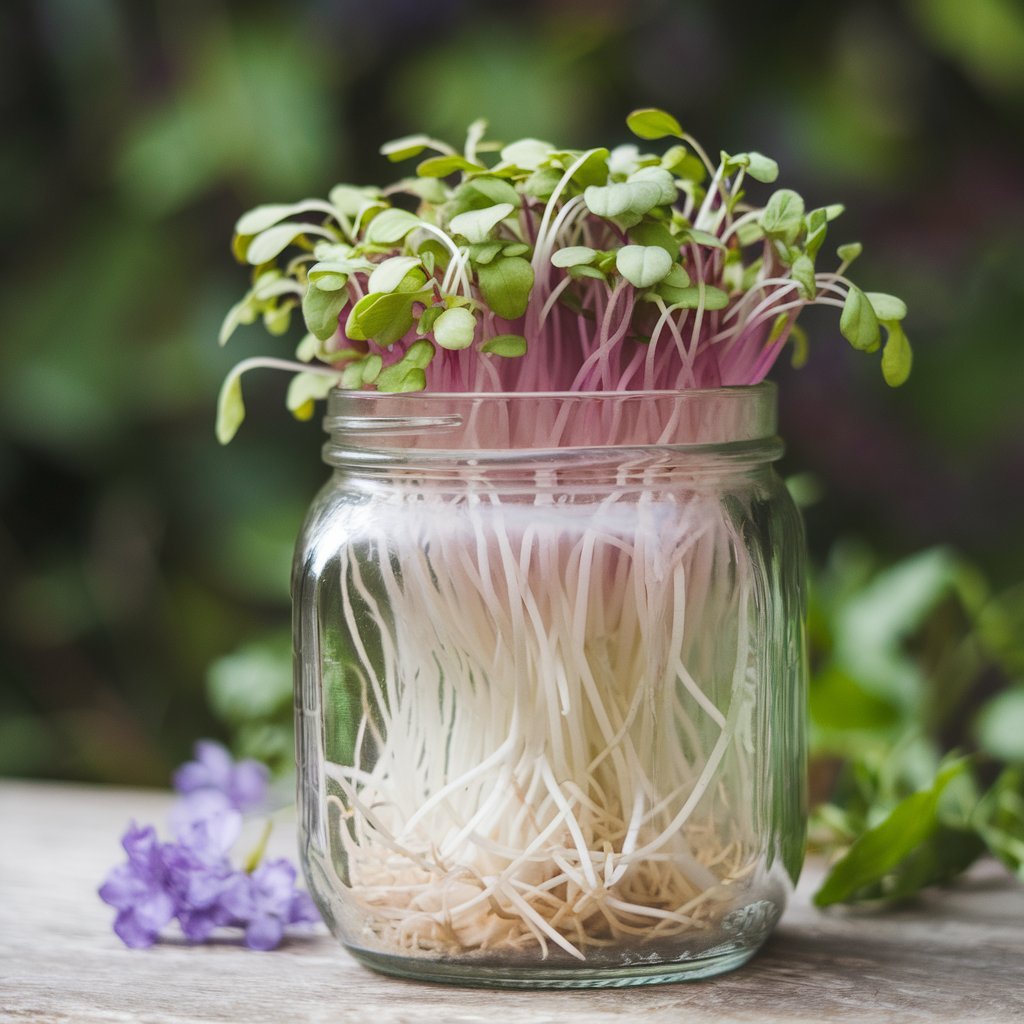Radish sprouts tend to be overlooked when discussing superfoods. These tiny greens pack a punch, offering a wealth of health benefits and culinary versatility. In this article, we’ll delve into the world of radish sprouts, exploring their nutritional profile, health benefits, culinary uses, and how to grow them at home. Get ready to discover why radish sprouts should be a staple in your kitchen!
What Are Radish Sprouts?
Radish sprouts are the young shoots of the radish plant, typically harvested within a week of germination. They are small, delicate, and vibrant green, with a peppery flavor reminiscent of their mature counterparts. Available in various varieties, including red, white, and black radishes, these sprouts are not only a delightful addition to your meals but also a rich source of nutrients.
Nutritional Profile of Radish Sprouts
Radish sprouts are incredibly nutrient-dense. Here’s a breakdown of the key nutrients found in radish sprouts per 100 grams:
- Calories: Approximately 25
- Protein: 3 grams
- Fat: 0.1 grams
- Carbohydrates: 4 grams
- Fiber: 2 grams
- Vitamin C: 15% of the Recommended Daily Value (DV)
- Vitamin K: 7% of the DV
- Folate: 6% of the DV
- Calcium: 3% of the DV
- Iron: 4% of the DV
As you can see, radish sprouts are low in calories but high in essential vitamins and minerals, making them an excellent choice for those looking to boost their nutrient intake without added calories.
Health Benefits of Radish Sprouts
1. Rich in Antioxidants
Radish sprouts are packed with antioxidants, including vitamin C and various phytochemicals. These compounds help combat oxidative stress, reducing the risk of chronic diseases such as heart disease and cancer.
2. Supports Digestive Health
The fiber content in radish sprouts aids digestion by promoting regular bowel movements and preventing constipation. A healthy digestive system is essential for overall well-being, and incorporating radish sprouts into your diet can help support gut health.
3. Boosts Immune Function
With their high vitamin C content, radish sprouts can help strengthen your immune system. Vitamin C is known for its role in enhancing the production of white blood cells, which are crucial for fighting off infections and illnesses.
4. Promotes Healthy Skin
The antioxidants and vitamins in radish sprouts can contribute to healthier skin. Vitamin C is vital for collagen production, helping to maintain skin elasticity and reduce the appearance of wrinkles. Additionally, the anti-inflammatory properties of radish sprouts may help soothe skin irritations.
5. May Aid Weight Loss
Due to their low calorie count and high fiber content, radish sprouts can be a great addition to a weight loss diet. The fiber keeps you feeling full for an extended period, helping to decrease your overall calorie consumption. Incorporating radish sprouts into meals can add volume without significantly increasing calories.
6. Supports Heart Health
The phytochemicals found in radish sprouts may contribute to heart health by reducing cholesterol levels and lowering blood pressure. A diet rich in antioxidants and fiber is associated with a lower risk of heart disease.
Culinary Uses of Radish Sprouts
Radish sprouts are incredibly versatile and can be used in various dishes. Here are several popular methods to include them in your meals:
1. Salads
Add a handful of radish sprouts to your salads for a crunchy texture and peppery flavor. They pair well with leafy greens, tomatoes, cucumbers, and a variety of dressings.
2. Sandwiches and Wraps
Use radish sprouts as a tasty topping for sandwiches and wraps. They add a fresh, zesty kick to any filling, whether it’s turkey, hummus, or grilled vegetables.
3. Smoothies
For a nutrient boost, toss a small handful of radish sprouts into your smoothies. They blend well with fruits and other greens, adding a unique flavor profile.
4. Soups and Stews
Radish sprouts can be sprinkled on top of soups and stews just before serving. They provide a delightful crunch and enhance the dish’s presentation.
5. Sushi and Rice Dishes
Incorporate radish sprouts into sushi rolls or sprinkle them over rice dishes for added texture and flavor. They complement the freshness of raw fish and vegetables beautifully.
6. Garnish
Use radish sprouts as a garnish for various dishes. They can elevate the appearance and flavor of omelets, grain bowls, and main courses.
How to Grow Radish Sprouts at Home
Cultivating radish sprouts at home is an easy and fulfilling endeavor. Here’s a step-by-step guide to get you started:
Materials Needed
- Radish seeds (look for seeds specifically labeled for sprouting)
- A sprouting jar or tray
- Water
- Cheesecloth or mesh lid (for jar sprouting)
Instructions
- Soak the Seeds: Start by soaking about 2 tablespoons of radish seeds in water for 4-6 hours. This helps initiate the germination process.
- Drain and Rinse: After soaking, drain the water and rinse the seeds thoroughly. If using a sprouting jar, cover the jar with cheesecloth or a mesh lid.
- Sprout the Seeds: Place the jar or tray in a well-ventilated area with indirect sunlight. Rinse and drain the seeds every 8-12 hours to keep them moist.
- Harvest: In about 5-7 days, your radish sprouts will be ready for harvest. They should be around 1-2 inches tall. Rinse them one last time and remove any seed hulls.
- Storage: Store your radish sprouts in a sealed container in the refrigerator. They can last for about a week.
Conclusion
Radish sprouts are a nutritional powerhouse that can easily be incorporated into your diet. With their impressive health benefits, delicious flavor, and versatility in the kitchen, it’s no wonder they are gaining popularity among health enthusiasts. By growing them at home, you can enjoy fresh sprouts whenever you like!
Whether you sprinkle them on salads, add them to sandwiches, or blend them into smoothies, radish sprouts are an excellent way to boost your nutrient intake while adding a delightful crunch to your meals. Embrace the goodness of radish sprouts and make them a regular part of your diet!




